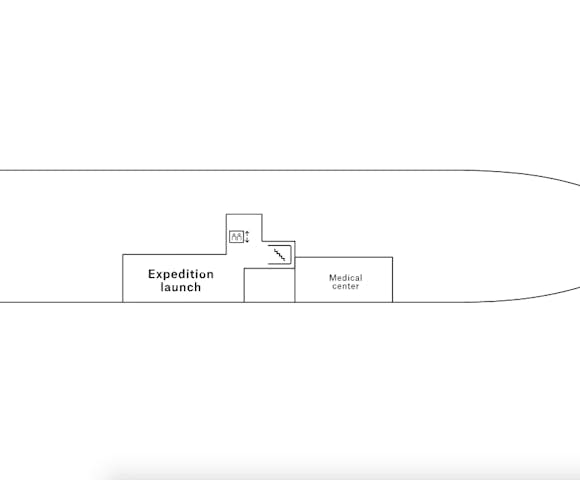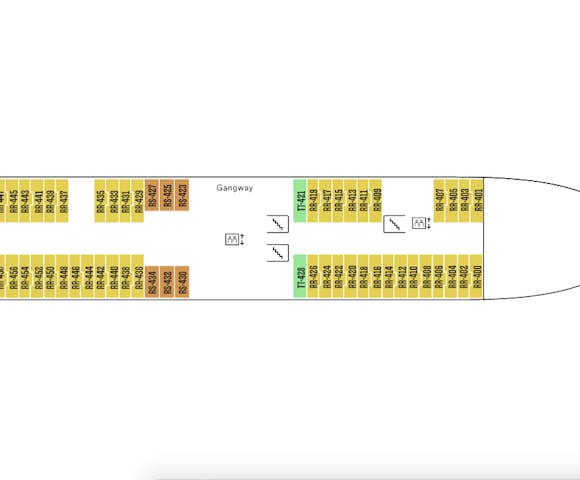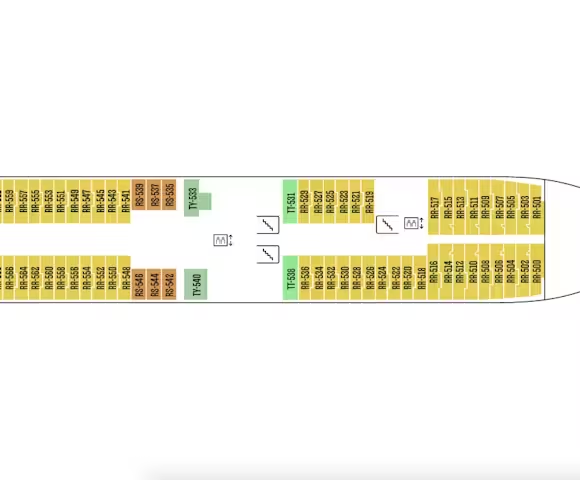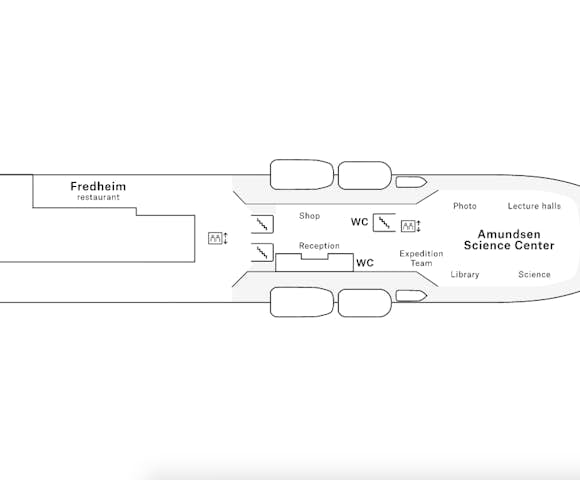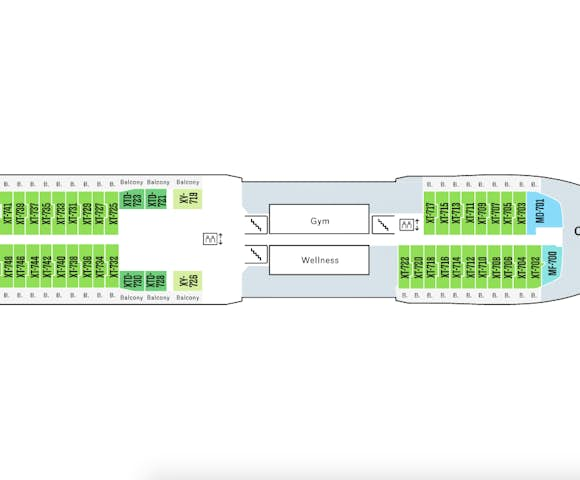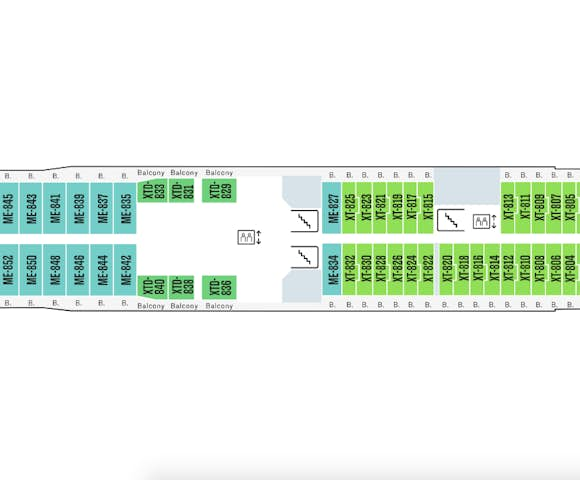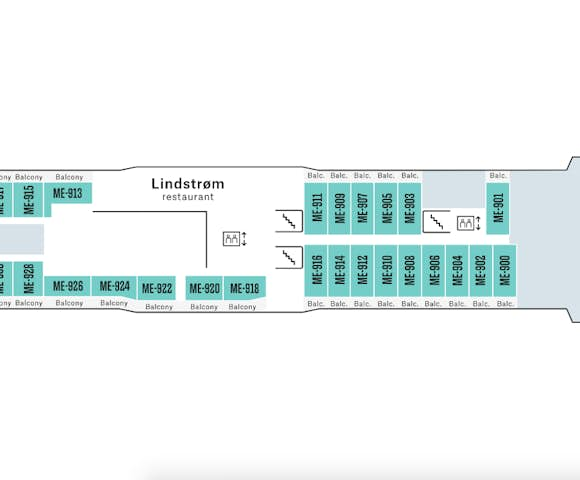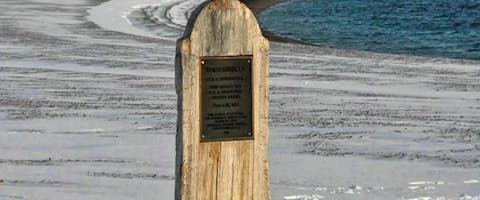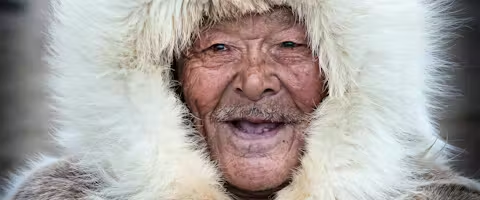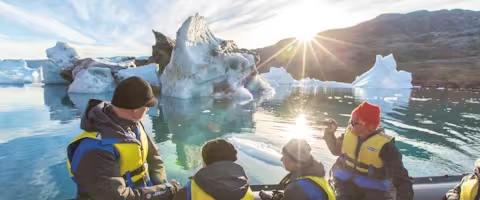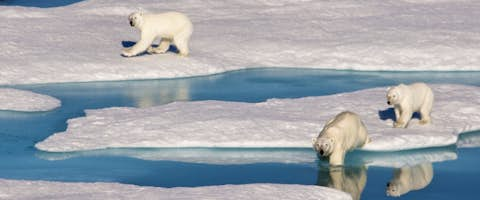The Complete Northwest Passage - 29 Days - $21,089
Trip Summary and Itinerary Map
- 6 days exploring the Bering Strait, Chukchi Sea and Beaufort Sea
- 11 days in the heart of the Northwest Passage
- 4 days in Greenland
- 2 days discovering Labrador & Newfoundland
- Flight from Vancouver to Nome included
- Complimentary expedition jacket and loan of boots makes packing easy
- Full expedition team with experts in a range of academic fields
- All inclusive of house drinks
- Sail on a new generation of hybrid-powered expedition vessel
Operator's Itinerary
Day 1 – Meet in Vancouver:
Meet in Vancouver ahead of the journey. Depending on when you arrive, you may have time to explore some of the city's public gardens, visit Stanley Park, or head to the sea in downtown. Vancouver is a popular tourist destination year round, with cultural and natural attractions to appeal to all.
You'll spend the night in a hotel in the city, included in the trip cost.
Day 2 – Embarkation from Nome:
After breakfast you'll fly to the gold rush town of Nome, a journey of approximately 10 hours. Upon arrival in this frontier town you'll embark the vessel and sea out on the open seas.
Days 3 to 8 – At sea towards the Northwest Passage:
Initially you'll sail the Bering Strait, which links the Arctic Ocean with the Bering Sea, before heading into the Chukchi Sea. As you near Point Barrow, the northernmost point of the USA, you enter the Beaufort Sea where you can keep a sharp lookout for Bowhead and Grey whales and you may also start seeing sea ice.
Continuing on, you'll reach the Amundsen Gulf, hoping to see the remarkable Smoking Hills – an amazing sight, with smoke billowing from the cliffs on the east coast of Cape Bathurst. Local Lignite, a combination of shale and pyrite, spontaneously ignites when exposed to air, due to the erosion of the hills, causing this photogenic phenomenon.
Days 9 to 19 – Heart of the Northwest Passage:
The ship next sets it's sights on the heart of the Northwest Passage.
Since the late 15th century, the search for this fabled seaway through the Canadian Arctic was a holy grail for hardy adventurers. There are records of almost 40 expeditions that sailed these waters, the first of which is the voyage of John Cabot in 1497. The most famous journey here was James Cook’s failed attempt to sail the Passage in 1776, and of course the ill-fated Franklin expedition of 1845. The first to conquer the Northwest Passage by ship was Norwegian explorer Roald Amundsen on an expedition that lasted from 1903 to 1906.
Ice conditions vary from year to year, which makes the voyage one of a kind. Subject to favourable conditions, the hope is to visit some of the following places:
Ulukhaktok is a settlement on Victoria Island in the Canadian Arctic Archipelago. Due to the remote location, the 460 people of Ulukhaktokk have had little to do with the rest of the world and remain traditional in many aspects of their daily life.
Cambridge Bay is located on Victoria Island. In Inuinnaqtun it is called 'Iqaluktuuttiaq', meaning a 'good fishing place.' The hamlet is located close to the Ekalluk River, which is famous for giant char. It is rich in archaeological history and blessed with abundant fish, seals, geese, muskoxen and caribou.
Gjøa Haven honours the Norwegian explorer Roald Amundsen, who wintered here from 1903 on the Gjøa expedition. He was in contact with the local Netsilik Inuit people and he learned a lot from them about survival and travel in polar regions.
Fort Ross is a trading post established in 1937. There are two small huts ashore that are maintained by the Canadian Coast Guard.
Beechey Island is closely linked to the history of exploration of the Northwest Passage. The most famous voyage is the British expedition led by Sir John Franklin. Two ships sailed into the passage in 1845, but neither the ships nor any of the 129 crewmembers were ever seen again. It is known that the Franklin Expedition over-wintered on Beechey Island in 1845-1846.
On the south coast of Devon Island lies Dundas Harbour, an abandoned settlement with an old Royal Canadian Mounted Police camp and several archaeological sites. Come ashore to see the ruins of some of these buildings, along with an impressive Thule site.
The picturesque hamlet of Pond Inlet, also called 'Mittimatalik' in Inuktitut, is a traditional Inuit community, located on the northern tip of Baffin Island, near the eastern entrance to the Northwest Passage. Pond Inlet is surrounded by mountain ranges, with several dozen glaciers, scenic fjords and inlets, ice caves, geological hoodoos and drifting icebergs.
In addition, you will be sailing in amazing straits with unique nature and hopefully enough ice to make it for excellent wildlife spotting.
Day 20 – Crossing the Davis Strait:
Cross the Davis Strait, named for the English explorer John Davis, who led three expeditions in the area between 1585 and 1587. Davis was the first to draw attention to seal hunting and whaling possibilities in the area, and to show that the Newfoundland cod fisheries extended this far north.
Day 21 – Full day in Ilulissat:
Ilulissat is set in the stunning scenery of the Ilulissat Icefjord, a UNESCO World Heritage Site. Just outside the town, at the mouth of the fjord, you can often see enormous icebergs that have run aground. They originate from the Jakobshavn Glacier, one of the most productive glaciers in the Northern Hemisphere. The icebergs make their way down the 20 km fjord before entering Disko Bay.
You'll get a closer look at these beautiful frozen giants on a walk to the Ilulissat ice fjord, about two hours in duration.
Day 22 – Half day in Sisimiut:
Sisimiut is situated 40 km north of the Arctic Circle and is a modern settlement that maintains ancient traditions. You'll spend half a day exploring the colourful town, where you can hike in the hills, shop for local handicrafts, and visit the local museum to learn about the city's history. You will also get to experience a traditional kayaking demonstration, witnessing the Greenlander kayak roll first hand.
Day 23 – Full day in Nuuk:
The capital of Greenland is the political and social centre of the nation, and the oldest town in Greenland, founded by the Danish-Norwegian missionary Hans Egede in 1728. The city’s location is lovely, set at the mouth of one of the largest and most spectacular fjord systems in the world.
During your day here you will visit the National Museum of Greenland, host to exhibitions covering Greenland's history during the past 4,500 years – from the first Arctic Stone Age cultures to the Norse settlements, the arrival of the Thule culture and the gradual transition to modern day Greenland.
Day 24 – Full day in Ivittuut:
Your day will be spent in Ivittuut, a stronghold for musk oxen. The settlement was built on top of the so-called Norse Middle settlement where Vikings settled 1,000 years ago. Archaeologists believe it was the last settlement established, and the first to be abandoned in the area.
Day 25 – At sea towards Newfoundland and Labrador:
It is time to say goodbye to Greenland, and head for another stretch of open sea. You will cross the southern part of the Labrador Sea, this time towards Newfoundland and Labrador in Canada.
Day 26 – Half day in Red Bay:
Red Bay, on the coast of Labrador, is a classic outpost of Atlantic Canada, a coastal community with a population of less than 200. In 2013, Red Bay Basque Whaling Station was designated a UNESCO World Heritage Site. You can get a feel for this former whaling town and learn about its interesting history wandering around and visiting both the World Heritage Site Interpretation Centre and the Community Centre Whaling Exhibit. If you like, you can also join a boat ride to Saddle Island where you can explore the remnants of whale blubber ovens used more four centuries ago.
Day 27 – Full day in Corner Brook:
Corner Brook is located on the west coast of the island of Newfoundland and has approx. 20,000 inhabitants. The area was first surveyed by Captain James Cook in 1767. Explore the charming town centre or enjoy its many walking trails amid vibrant autumn leaves.
Day 28 – At Sea:
Every great adventure must come to an end. Reflect on the experiences shared with your fellow travellers and the Expedition Team as you head to Halifax.
Day 29 – Disembark in Halifax:
Arrive in Halifax, enjoying the views from the Citadel-crowned hill overlooking the city. After disembarking the ship you may want to spend an extra day or two exploring the town before you head back home.
NOTE: This itinerary is for guidance only. Each voyage will vary depending on ice and weather conditions, and opportunities to see wildlife. Flexibility is key and all part of the adventure of an expeditionary cruise.
About The Ship
- Purpose built expedition ship designed to carry 530 guests in comfort with facilities to match and an ability to provide excursions for all
- Go anywhere capability with icebreaker strength
- Carefully designed to immerse guests in the destination with science centres, lecture theatres and a host of expert guides
- A huge range of cabins gives a choice to everyone
- Three restaurants, a sauna and spa makes an expedition feel like a holiday too
- A two level indoor/outdoor observation deck means you will miss nothing
- A hybrid-powered ship with zero single use plastic onboard – every effort is made to make trips as green as possible
Prices, Departures and Inclusions
Prices quoted below are per person based on 2 people sharing. Cabin availability changes all the time so please contact us for up-to-date details and information on specific cabin availability.
Single Supplement And Child Policy
For those travelling solo and want their own cabin, the single supplement for a private cabin varies from cabin to cabin. There are no dedicated single cabins and as a general rule the full price for two people is applied less the value of the charter flight.
Children are welcome on this voyage, however it is an expedition and smaller children may not be able to take part in some activities. This is always at the discretion of the onboard expedition team. As a general guide we would not recommend a voyage like this for children under 12.
Includes
- One night pre-voyage hotel stay in Vancouver
- Transfer from hotel to airport in Vancouver
- Charter flight from Vancouver to Nome
- Transfer from airport to ship in Nome
- All excursions and activities by Zodiac
- Voyage aboard the vessel as indicated in the itinerary
- Accommodation during the voyage on full board basis
- All shore excursions and zodiac activities
- Educational lectures by expert onboard polar guides
- Access to an onboard doctor and basic medical services
- Complimentary expedition jacket
- Loan of rubber boots and trekking poles for the voyage's duration
- Basic Wi-Fi onboard
- Comprehensive pre-departure information
- Port taxes and any entry fees to historic landing sites
Excludes
- Flights to and from Vancouver
- Any additional services before and after your voyage
- Optional shore excursions and adventure activities
- Meals in the a la carte restaurant
- Transfers not specific to the itinerary
- Travel insurance
- Any visa, passport and vaccination expenses
- Airport arrival or departure taxes
- Items of a personal nature: laundry, beverages, etc
- Customary staff gratuity at the end of the voyage
- Additional onboard purchases (i.e. gifts, drinks)

